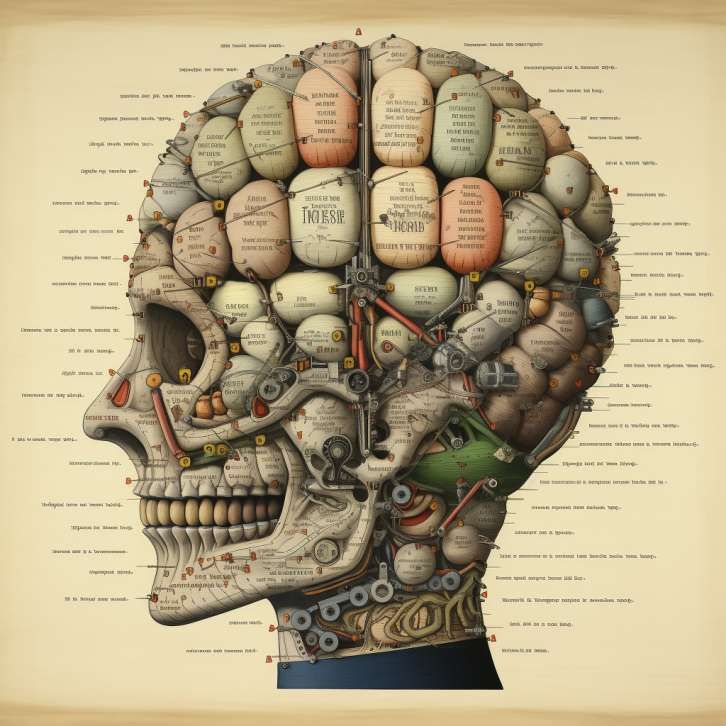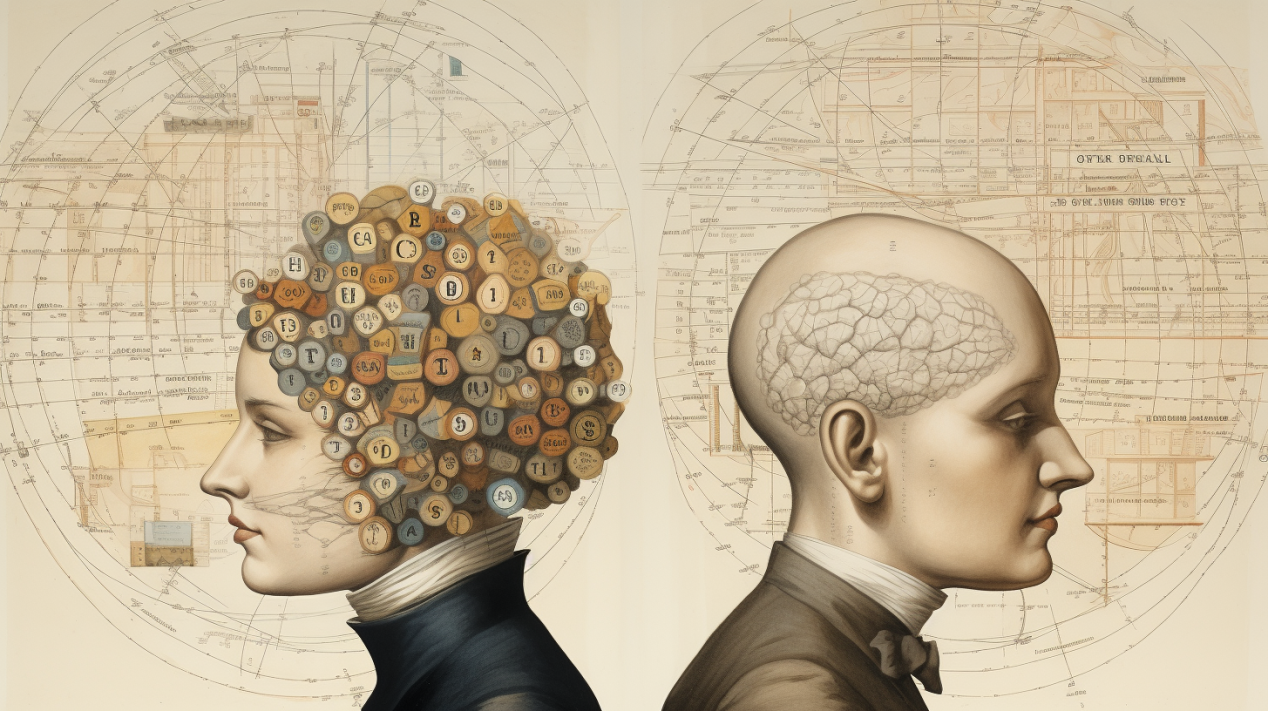Phrenology, the pseudoscience of linking personality traits to head shape, has captivated minds for over 200 years despite lacking empirical evidence.
A recent study took a novel approach to finally settling the debate – utilizing modern neuroimaging and big data to rigorously test phrenological claims.
The results provide a definitive refutation of phrenology’s core premise.
However, the study highlights how applying contemporary statistical and computational methods can reveal insights even in historically discredited theories.
Key Facts:
- Phrenology posited 27 “faculties” (mental functions) localized in distinct brain areas that influenced skull shape.
- Researchers compared MRI head scans and lifestyle data from ~6,000 subjects, searching for links between head shape and faculties.
- No significant correlations found between localized scalp curvature and any of the 23 tested faculties.
- Phrenological busts remain invalid – head shape does not reflect personality traits or mental functions.
- While dispelling phrenology, the study demonstrates using current neuroimaging techniques to evaluate outdated theories.
Source: Cortex
The Birth and Eventual Downfall of Phrenology
In the late 18th century, Austrian anatomist Franz Joseph Gall developed an ambitious theory proposing that individual personality traits originate from localized brain regions.
Gall further speculated that growth and activity in these discrete areas would increase pressure on the skull, permanently molding its shape.
In Gall’s framework, the brain contained 27 distinct “organs” or modules responsible for faculties like “Self-Esteem,” “Language,” and “Amativeness.”
By palpating the skull, Gall aimed to reverse engineer the brain’s functional organization based on external cranial features.
This doctrine formed the core of phrenology, the pseudoscience of assessing character and abilities from head shape.
Gall’s ideas found popularity despite sparse evidence, with phrenological societies sprouting up in Victorian England and America.
Phrenologists manufactured ceramic heads marking each faculty’s location, drafted detailed skull maps, and offered skull readings.
The outfitting of the phrenological toolkit with calipers and measuring tapes seemingly lent validity through quantification.
However, phrenology also attracted immense criticism from contemporary anatomists and physicians.
They dismissed the theory as overly simplistic, questioning how rigid faculties could account for the immense complexity and plasticity of the mind.
The localization of faculties to precise skull regions was also quickly invalidated – patients with head injuries exhibited no loss of the purported corresponding functions.
Alternative approaches like Paul Broca’s lesion-mapping gradually rendered phrenology obsolete by demonstrating that damage to specific cortical areas produced consistent deficits.
Phrenology lacked explanatory and predictive power in comparison to ascendant localization theories.
By the early 20th century, phrenology had been utterly discredited scientifically.
Yet its core ideas that brain structure and function localize in a modular manner proved prescient, if not precisely correct.
Testing Phrenology with 21st Century Neuroimaging

Phrenology clearly failed on its own terms according to contemporary standards.
But recently, researchers sought to directly test its claims utilizing modern neuroimaging data and computational methods.
Previous critiques lacked large-scale quantitative evidence conclusively disproving the link between head shape and mental traits.
The advent of large neuroimaging datasets and automated image processing finally enabled rigorously evaluating phrenology’s viability.
In the new study, scientists leveraged MRI data from over 5,700 subjects in the UK Biobank project – orders of magnitude larger than any phrenological sample.
The researchers extracted 3D head surface scans from the MRI data, providing detailed maps of cranial morphology unimaginable to early phrenologists.
They precisely quantified local curvature across over 40,000 vertices per subject.
This automated, massive-scale measurement approach avoided the subjectivity and low resolution of manual skull palpation.
To stand in for Gall’s faculties, the researchers mapped 23 items from lifestyle questionnaires onto attributes like “Self-Esteem” and “Language.”
For example, number of vehicles owned proxied for “Acquisitiveness.”
Choice of metrics aimed to evoke the Victorian faculty concept while covering diverse cognitive domains.
They then correlated curvature measurements to the putative faculties, controlling for multiple comparisons using current standards.
Additionally, they directly evaluated whether head curvature actually reflected cortical folding patterns as proposed.
No Evidence for Phrenology Found in Neuroimaging Data
In short, the neuroimaging analysis thoroughly discredited phrenological doctrine.
No significant correlations emerged between any faculties, from “Amativeness” to “Cautiousness,” and localized scalp curvature.
Contrary to phrenology, head shape fails to provide any reliable indication of personality traits or mental functions.
Phrenologists’ belief that external skull features reflected cortical morphology proved equally unfounded.
Only negligible relationships existed between regional head curvature and underlying brain folding.
The researchers could therefore confidently conclude that phrenological claims lack empirical support.
They note that a true phrenological bust should actually be blank, devoid of any faculty markings.
Even uncorrected correlation maps failed to resemble phrenologist’s proposed faculty locations.
Modernizing Phrenology Highlights Power of Neuroimaging
Leveraging cutting-edge neuroimaging to finally demolish phrenology may seem overkill to some critics.
However, the study highlights how applying contemporary computational tools can extract insights from outdated ideas.
Techniques like morphometric analysis quantitatively enrich theories based solely on observation and anecdote.
Although phrenology itself has long been debunked, rigorously testing its specific claims remained challenging before large neuroimaging datasets and automation.
Big data resources enabled evaluating phrenology on its own terms with a sample size orders of magnitude beyond manual methods.
In that light, definitively disproving phrenology once and for all serves as a case study in rationally assessing speculative theories.
The approach demonstrates repurposing neuroimaging pipelines to probe novel hypotheses outside typical cognitive neuroscience domains.
Future neuroimaging studies could fruitfully analyze endocranial casts from fossil skulls rather than the outer surface.
Such efforts would provide comparative evidence testing evolutionary theories of how increasing brain size shaped early human development.
More clinically, automated extraction of inner skull features shows promise for planning surgery in severe deformational disorders like craniosynostosis.
Overall, the tools developed open avenues for examining relationships between skull morphology and pathology.
While phrenology has long been relegated to the dustbins of pseudoscience, combining its guiding questions with modern neuroscience techniques proves illuminating.
This study exemplified leveraging big data resources and computational methods to decisively settle enduring debates.
Its neuroimaging pipeline also provides a framework to explore links between physical features and mental traits across disciplinary boundaries.
References
- Study: An empirical 21st century evaluation of phrenology
- Authors: O. Parker Jones et al. (2018)







